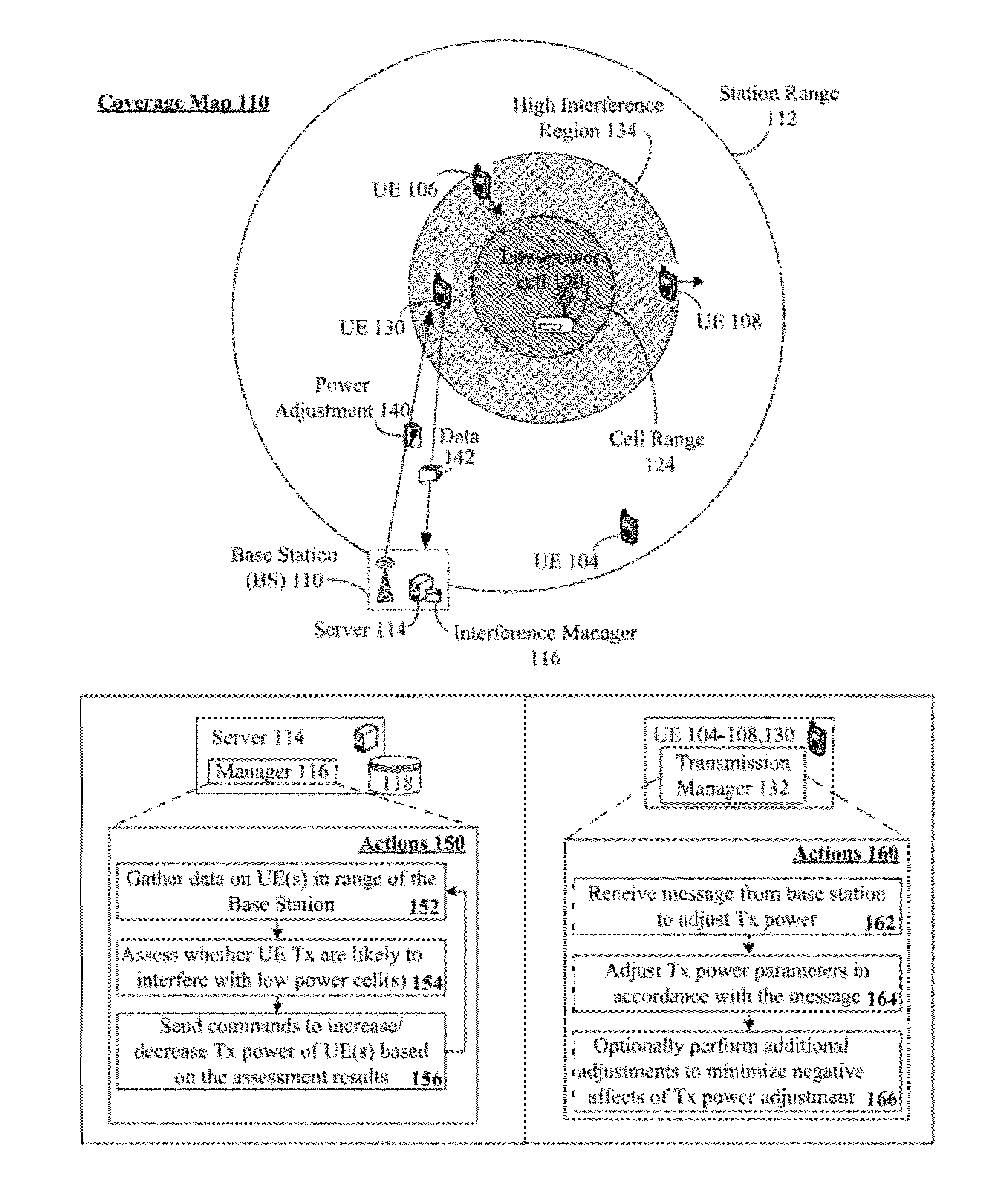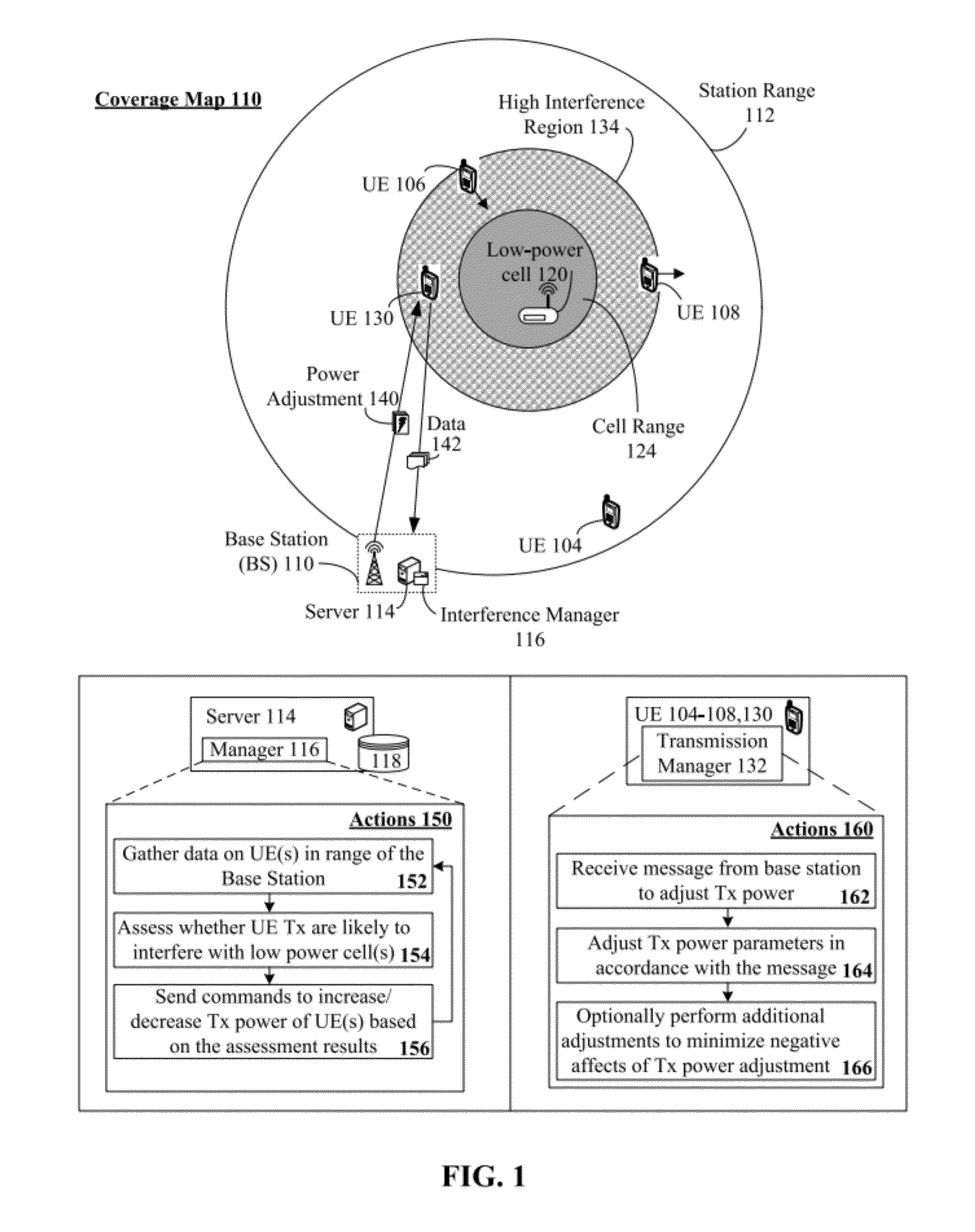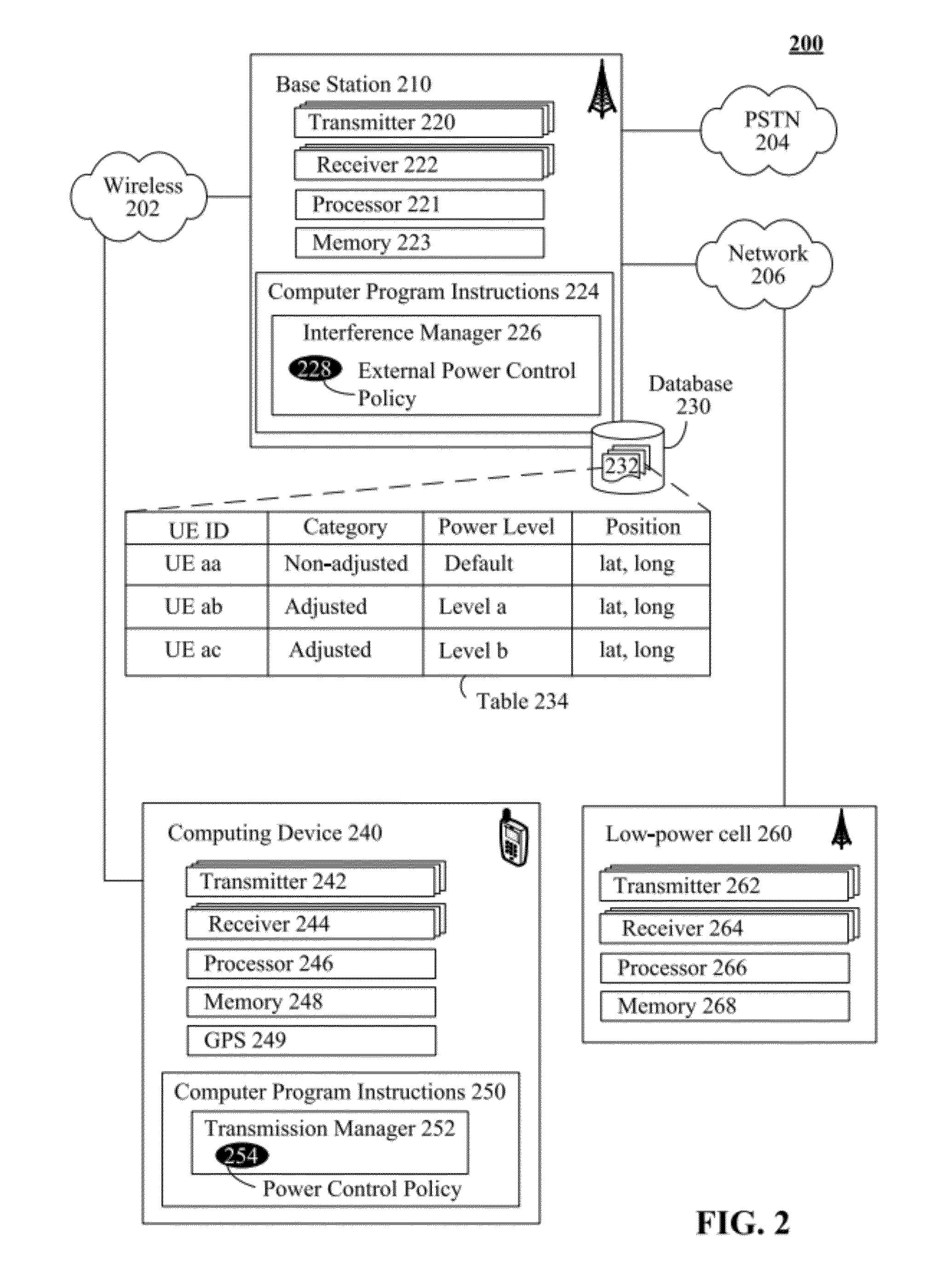Uplink interference management for a heterogeneous wireless network
a wireless network and heterogeneous technology, applied in wireless commuication services, climate sustainability, sustainable buildings, etc., can solve the problems of high interference affecting uplink performance, reduce high interference, and reduce transmission power
- Summary
- Abstract
- Description
- Claims
- Application Information
AI Technical Summary
Benefits of technology
Problems solved by technology
Method used
Image
Examples
Embodiment Construction
[0010]In one embodiment, a base station can detect one or more mobile wireless devices that are causing uplink interference with a low-power cell, such as micro-cells, pico-cells, femto-cells, relays, etc. That is, the mobile wireless device (also referred to as user equipment, UE, or an interfering UE) is transmitting a relatively high power while the interfering UE is close enough to the low-power cell to cause interference with a different UE's uplink to the low-power cell. The base station can send a command to the interfering UE, which causes the UE to change its transmission characteristics. These changed transmission characteristics reduces the interference.
[0011]The base station can also detect when the interfering UE leaves a zone (e.g., a high interference region) where it is likely to cause interference with the low-power cell. This causes the base station to issue a command (e.g., a second command) to the interfering UE. When the interfering UE receives this second comma...
PUM
 Login to View More
Login to View More Abstract
Description
Claims
Application Information
 Login to View More
Login to View More - R&D
- Intellectual Property
- Life Sciences
- Materials
- Tech Scout
- Unparalleled Data Quality
- Higher Quality Content
- 60% Fewer Hallucinations
Browse by: Latest US Patents, China's latest patents, Technical Efficacy Thesaurus, Application Domain, Technology Topic, Popular Technical Reports.
© 2025 PatSnap. All rights reserved.Legal|Privacy policy|Modern Slavery Act Transparency Statement|Sitemap|About US| Contact US: help@patsnap.com



